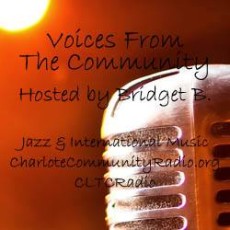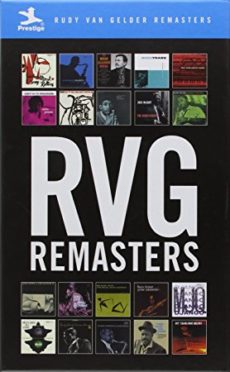
Daily Dose Of Jazz…
Rudolph “Rudy” Van Gelder was born on November 2, 1924 in Jersey City, New Jersey. His interest in microphones and electronics can be traced to a youthful enthusiasm for amateur radio. Named for his uncle who had been the drummer in Ted Lewis’s band in the mid-1930s, he took trumpet lessons and trained as an optometrist at the Pennsylvania College of Optometry, in Philadelphia, thinking he could not earn a living as a recording engineer.
From 1943, after graduating, Van Gelder had an optometry practice in Teaneck, New Jersey, and moonlighted recording local musicians in the evenings who wanted 78-rpm recordings of their work. From 1946, Van Gelder recorded in his parents’ house in Hackensack, New Jersey, in which a control room was built adjacent to the living room, which served as the musicians’ performing area. The dry acoustics of this working space were partly responsible for Van Gelder’s inimitable recording aesthetic.
Interested in improving the quality of the playback equipment he acquired everything that could play back audio: speakers, turntables and amplifiers. One of Rudy’s friends, baritone saxophonist Gil Mellé, introduced him to Alfred Lion, a producer for Blue Note Records, in 1953. Within a few years he was in demand by many other independent labels based around New York City, such as Bob Weinstock, owner of Prestige Records. To accommodate each label – Blue Note, Prestige, Savoy, Impulse, Verve he assigned them to different days as Lion was more stringent with the sound of original music, Weinstock had essentially blowing sessions for some of the best musicians in jazz history.He also engineered and mastered for the classical label Vox Records in the Fifties.
Van Gelder worked during the day as an optometrist until the summer of 1959, when he moved his operations to a larger studio in Englewood Cliffs, New Jersey and became a full-time recording engineer. The new studio’s design was inspired by the work of Frank Lloyd Wright had high ceilings and fine acoustics with “no food or drink and do not touch microphones” policy as he himself always wore gloves when handling equipment.
By 1967 the labels were beginning to utilize other engineers more regularly but Rudy remained active engineering nearly all of Creed Taylor’s CTI Records releases, a series of proto-smooth jazz albums that were financially successful, but not always well received by critics. He was not without his detractors. Despite his prominence in the industry, like Lion who didn’t care for the overuse of reverb, and Charles Mingus refused to work with him because he change the sound of his bass. He remastered the analog Blue Note recordings into 24-bit digital recordings in its RVG Edition series and also remasters of some of the Prestige albums, and was happy to see the LP go by the wayside because it was hard for him to get the sound the way he thought it should be.
He received awards and honors being named a fellow of the Audio Engineering Society (AES), received the society’s most prestigious award, the AES Gold Medal, named a Jazz Master by the National Endowment for the Arts, received the Grammy Trustees Award, and Thelonious Monk composed and recorded a tribute to Van Gelder titled Hackensack.
Producer and recording engineer Rudy Van Gelder, who specialized in jazz and regarded as the most important recording engineer of jazz by some observers, passed away at home in Englewood Cliffs, New Jersey on August 25, 2016. Among the several thousand jazz sessions he recorded are the acknowledged classics John Coltrane’s A Love Supreme, Miles Davis’s Walkin’, Herbie Hancock’s Maiden Voyage, Sonny Rollins’s Saxophone Colossus and Horace Silver’s Song for My Father.
![]()
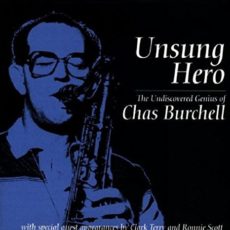
Daily Dose Of Jazz…
Chas Burchell was born Charles Burchell on October 30, 1925 in London, England. Originally a George Formby fan, he began learning the ukelele and then guitar, before hearing an Artie Shaw record that inspired him to take up the clarinet and play jazz.
Switching to alto saxophone, he started his own quintet in 1943. He tried the tenor saxophone before being drafted into the Royal Air Force, and then was transferred to the army in 1944. During the next three years he played in Greece with the British Divisional Band and following his discharge in 1947, worked in London with the Toni Antone Big Band.
By 1949 he gave up full-time musicianship and worked in a factory so that he would not have to perform music he did not like in order to make a living. A disciple of Lennie Tristano and a devoted admirer of Warne Marsh, Burchell continued to play part-time, leading his own quintet for more than 20 years, guesting with distinguished visitors such as Clark Terry, Emily Remler and Nathan Davis.
He recorded for Peter Ind’s Wave label and played with Ind in the group that backed Lennie Tristano’s only UK concert at Harrogate in 1968. Tenor saxophonist Chas Burchell, a supple, lyrical musician whose unpredictable twists and turns of phrase recall the style of his idol Marsh, died of a heart attack on June 3, 1986.
![]()
#preserving genius
More Posts: saxophone
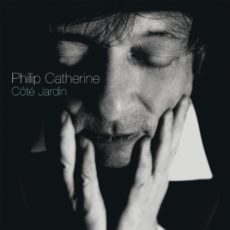
Daily Dose Of Jazz…
Philip Catherine was born on October 27, 1942 in London, England to English/Belgian parents and a grandfather who was first violinist in the London Symphony Orchestra. Having an ear for music early on, he picked up the guitar after hearing George Brassens and began listening to jazz.
He soon got the opportunity to play with some of those musicians when performing in Belgium, where he was residing at the time. In the 1960s he was a member of the Jean-Luc Ponty Quintet and during this period he was at the forefront on the European jazz scene performing and recording with Lou Bennett, Billy Brooks, Edgar Bateman, John Lee, Gerry Brown, Larry Coryell, Alphonse Mouzon, Charlie Mariano, Kenny Drew and Tom Harrell, among others.
Recording his debut solo album Stream in 1971 for Warner Bros. Records, the following year Philip collaborated with John Scofield, Ran Blake, George Benson and other musicians in Boston, Massachusetts. By early 1976 he replaced Jan Akkerman in the Dutch rock group Focus, recording on one album Focus con Proby, featuring American singer P. J. Proby.
The 1980s Catherine played extensively with the Chet Baker Trio and is featured on several of Baker’s albums. He went on to play with Charles Mingus, who dubbed him “Young Django”, as well as collaborations with Dexter Gordon, Richard Galliano, Niels-Henning Ørsted Pedersen, Stéphane Grappelli, Toots Thielemans, Robert Wyatt, Klaus Doldinger, Buddy Guy, Karin Krog, Carla Bley, Mike Mantler and Joachim Kühn as well as others too numerous to list.
He won the first Belgian Golden Django in 1995 and is considered the grandfather of Belgian jazz for his approach, sound, emotional lyricism and expression that is both important and influential. Guitarist Philip Catherine continues to perform on the now very active Belgian jazz scene as well as record and tour worldwide.
More Posts: guitar

Daily Dose Of Jazz…
Chubby Jackson was born Greig Stewart Jackson on October 25, 1918 in New York City and began at the age of seventeen as a clarinetist but soon after changed to bass.
In the 1950s, Jackson worked as a studio musician, freelanced, and hosted some local children’s TV shows: Chubby Jackson’s Little Rascals and The Chubby Jackson Show, from 1959 to 1961. He briefly served as the fourth and last emcee of WOR TV’s Looney Tunes Show/The Chubby Jackson Show weekday afternoons, the first six months of 1962.
Jackson performed and/or recorded over the course of his career with Louis Armstrong, Raymond Scott, Jan Savitt, Henry Busse, Charlie Barnet, Oscar Pettiford, Charlie Ventura, Lionel Hampton, Bill Harris, Woody Herman, Gerry Mulligan, Lennie Tristano and others.
Double-bassist Chubby Jackson, who was inducted into the Big Band and Jazz Hall of Fame and is best known for his spirited work both with the Herman bands and as a leader of his own small and big bands, passed away on October 1, 2003 in Rancho Bernardo, California at the age of 84.
Sponsored By
Voices From The Community
![]()
More Posts: bass
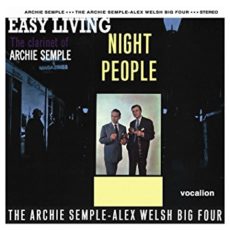
Daily Dose Of Jazz…
Jack Fallon was born on October 13, 1915 in London, Ontario, Canada and played violin before making double-bass his primary instrument at age 20. During World War II he played in a dance band in the Royal Canadian Air Force, and settled in Britain after his discharge. He joined Ted Heath’s band in 1946 and played bebop in London clubs in his spare time.
1947 saw Fallon playing with Ronnie Scott and Tommy Whittle at the Melody Maker/Columbia Jazz Rally, followed by his working with Jack Jackson, George Shearing and Django Reinhardt. Soon after playing with Reinhardt, he played in a Count Basie ensemble which also included Malcolm Mitchell and Tony Crombie, playing with both of them after leaving Basie. He went on to work together with Hoagy Carmichael and Maxine Sullivan and tour Sweden together with Reinhardt and Stéphane Grappelli.
In the 1950s he accompanied Mary Lou Williams, Sarah Vaughan, and Lena Horne. He was a sideman in the ensembles of Humphrey Lyttelton, Kenny Baker and Ralph Sharon, and was the house bassist at Lansdowne Studios. Working outside of jazz with blues musicians such as Big Bill Broonzy and Josh White, and played with Johnny Duncan’s Blue Grass Boys. As the bass guitar became more popular, Jack became a champion and played both instruments in the latter part of his career.
He became a booker/promoter establishing the booking agency Cana Variety in 1952. Cana booked primarily jazz artists in its early stages but expanded to rock acts by the 1960s, including The Beatles and The Rolling Stones and was requested by the Beatles to play violin on the song Don’t Pass Me By. Bassist Jack Fallon continued to play jazz locally in London, England and in the studios into the 1990s. He published a memoir titled From the Top in 2005, and passed away on May 22, 2006 at age 90 in London, England.
![]()
#preserving genius
More Posts: bass



